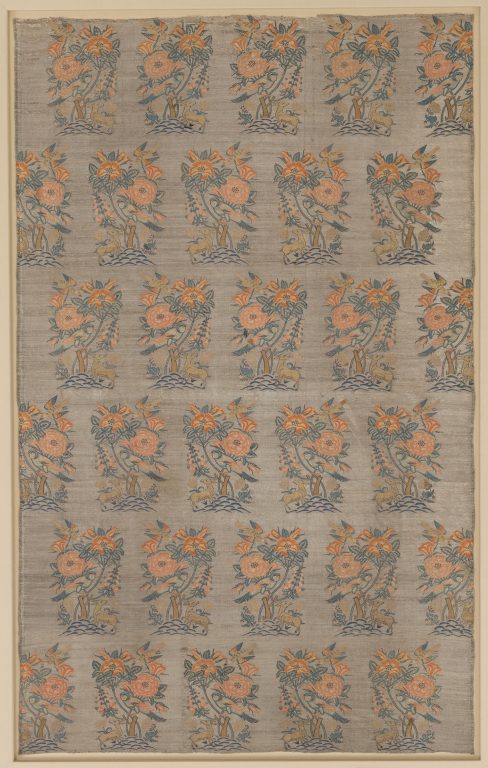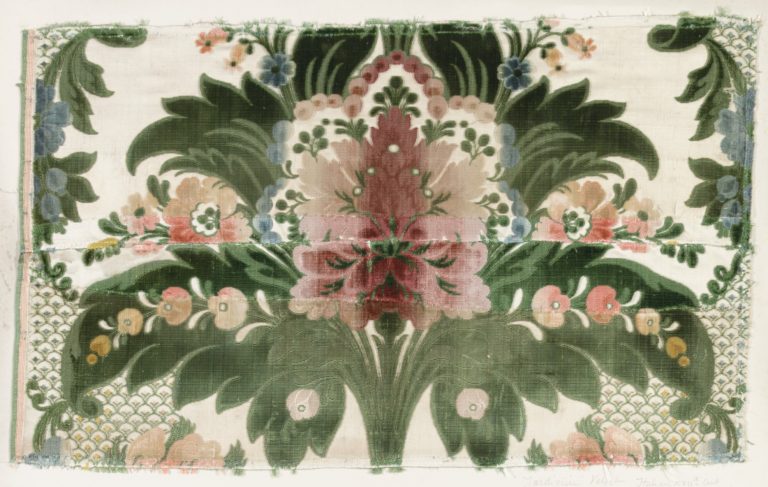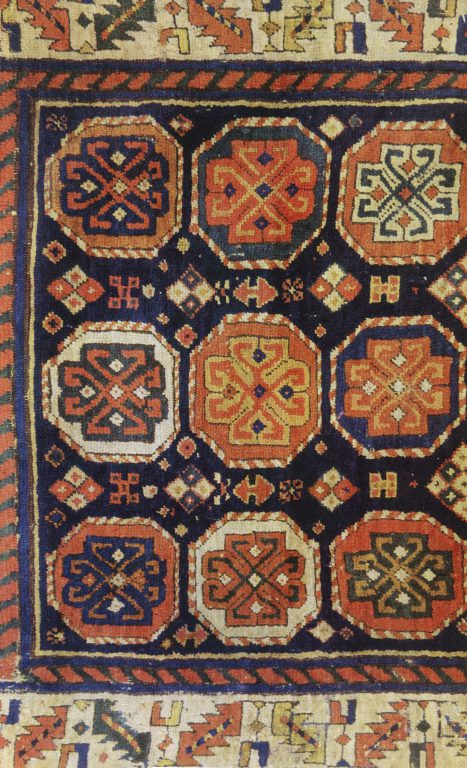
late 17th-early 18th century

Iran
Object qualities
-
Objecttextile (towels, carpets, etc.): Textile fragment
-
Type of arts & crafts
-
MediumSilk, silver- and gilded metal wrapped thread; compound twill weave, brocaded
-
SizeTextile: H. 44 5/8 in. (113.3 cm) W. 27 3/4 in. (70.5 cm) Mount: H. 50 1/4 in. (127.6 cm) W. 32 3/4 in. (83.2 cm) D. 1 1/2 in. (3.8 cm) Wt. 34 lbs. (15.4 kg)
-
Geography detailsAttributed to
Iran -
Country today
-
Datelate 17th-early 18th century
Source of information
-
Type of sourceDatabase “Metropolitan Museum of Art”
-
Fund that the source refers toMetropolitan Museum of Art
Description
-
Iranian silk production expanded markedly in the early seventeenth century, thanks to the patronage of Shah ‘Abbas I. Silk was most intensively farmed in the Caspian Sea provinces of Gilan and Mazandaran and was woven all over Iran. Raw silk was also exported to Turkey, Russia, Central Asia, India, and Europe. The motifs of a rosebush, birds, and deer on this piece relate it to the popular group of bird and flower textiles in the seventeenth century, anticipating the fashion for bird and flower decoration in the eighteenth and nineteenth centuries. The unnatural relationship of scale among the birds, deer, and flowers is most likely the artist’s interpretation.


























